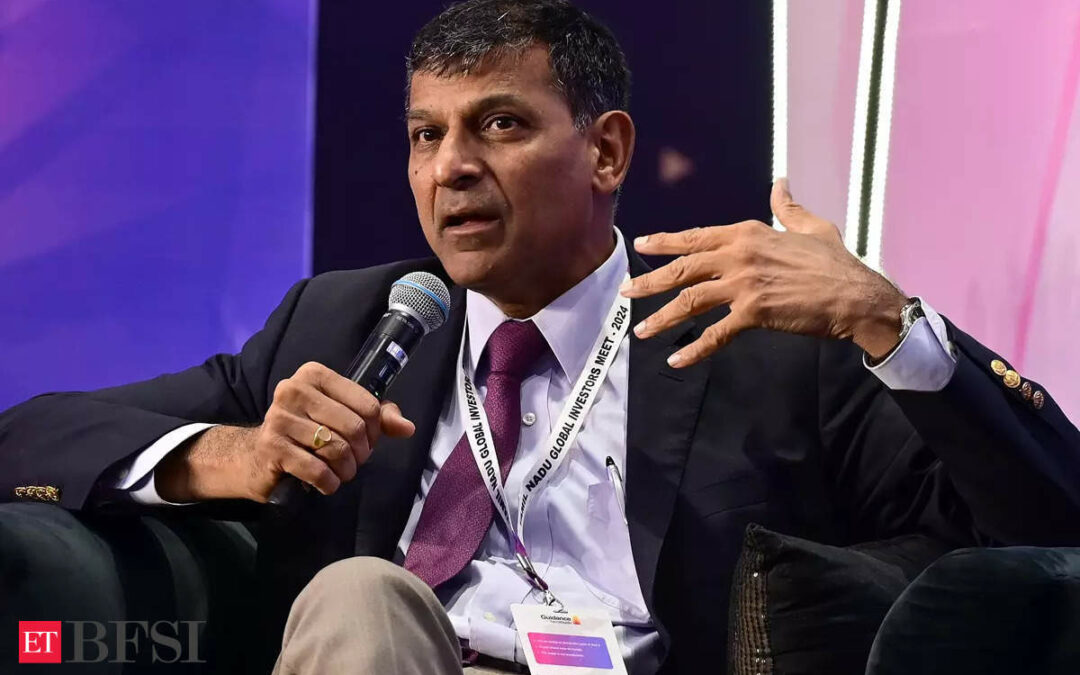Reserve Bank of India’s former governor Raghuram Rajan said that India was creating enough jobs as reflected by the number of applicants for vacant posts in some states with 7 per cent economic growth.
Rajan suggested that the focus must be on promoting labour-intensive industries to generate employment. He further said that some Indians at the upper-level are comfortable and have high incomes, but consumption growth from the lower half of the country has not recovered to pre-pandemic levels.
“That is the unfortunate part…You would think with 7 per cent growth, we would be creating a lot of jobs. But if you look at our manufacturing growth, it is more capital intensive,” he told PTI.
According to the former RBI governor, industries that are more capital-extensive are growing faster, but those that rely on labour are not growing.
“It is not going well at the lower level. I think the desperate need is for jobs. And you can see this, forget the official statistics.
“You can see it in the number of applications for government jobs, which are overwhelming,” said Rajan, who is a professor of finance at US-based Chicago Booth.
Rajan said that the Indian economy will grow at 6-7 per cent in the medium term.
He welcomed the apprenticeship schemes announced by the finance minister in this year’s Budget. “But we have to monitor that very closely, see what works and expand what works much more.”
Finance Minister Nirmala Sitharaman had announced in the Union Budget of FY25 that the government will launch three employment-linked schemes based on enrolment in Employees’ Provident Fund Organisation (EPFO).
He gave the examples of Vietnam and Bangladesh, two countries that are doing well in the labour-intensive textile and leather industries. “We need to look at this (labour-intensive industry) very, very carefully, we cannot be left out.”
Further, Rajan said that it was a “mystery” as to why the private sector is still lagging as far as capital expenditure is concerned
“When you look at capital utilisation (of the private sector), it is about 75 per cent…It seems as if demand has not kept up to the point where they feel they need to make all that kind of investment,” he opined.
He also highlighted that India has a short span of 15 years to reap benefits of demographic dividend and it should not lose this opportunity.
Also read: Why focusing on large corporations might worsen India’s job crisis
Goods and Service Tax (GST)
On the benchmark interest rate cut by the US Federal Reserve, Rajan said, “The 50 basis points rate cut by Fed has given them (central banks) more room to proceed at a pace that they think appropriate.”
“I think the Fed has created more room for others to perhaps reduce interest rates, and so in that sense, people will be looking at their policies,” he added.
On Goods and Services Tax (GST) rates rationalisation, Rajan said after a policy has run for a fair amount of time, it is useful to ask, what has been the experience and ‘do we need the policy change’.
“I would try and appoint an expert committee to go into it, to take the opinions, just like the Finance Commission does, take the opinions of the various stakeholders, including the states, and come up with something that meets the needs of the country,” he said.
Currently, GST works on a four-tier tax structure with slabs at 5, 12, 18, and 28 per cent. The new taxation regime came into effect in 2017.
Rajan said the Finance Commission has always been about the appropriate sort of allocation of taxes between the Centre and states on the debate on economically and socially better-off southern and western states ‘subsidising’ the northern and eastern states.
“If India grows together, (then) in fact, it prevents this kind of conflict…There is the equity issue, which is that the states that are growing faster, have also in the process, typically grow wealthier. And that is what is happening in the case of western and in the southern states,” he said.
North-south divide
Rajan observed that the western and southern states feel they are penalised in two ways — one is, they have to hand over more of their revenues to help some of the states who are falling behind.
“Plus, on the political front, they may lose seats if there is a delimitation process (where seats in the Lok Sabha are to be allocated based on the results of the next Census), because, you know, the more populous states will get more seats,” Rajan said.
He said that there needs to be a bridge in the gap between poorer and richer states.
Rajan said that the poorer states would buy more goods from richer states. “So there is some partial compensation for them (richer states)”, he said, adding that delimitation can be done in a more sort of respectful of the concerns of different parts of the country.
(With agency inputs)









